It's time for change.
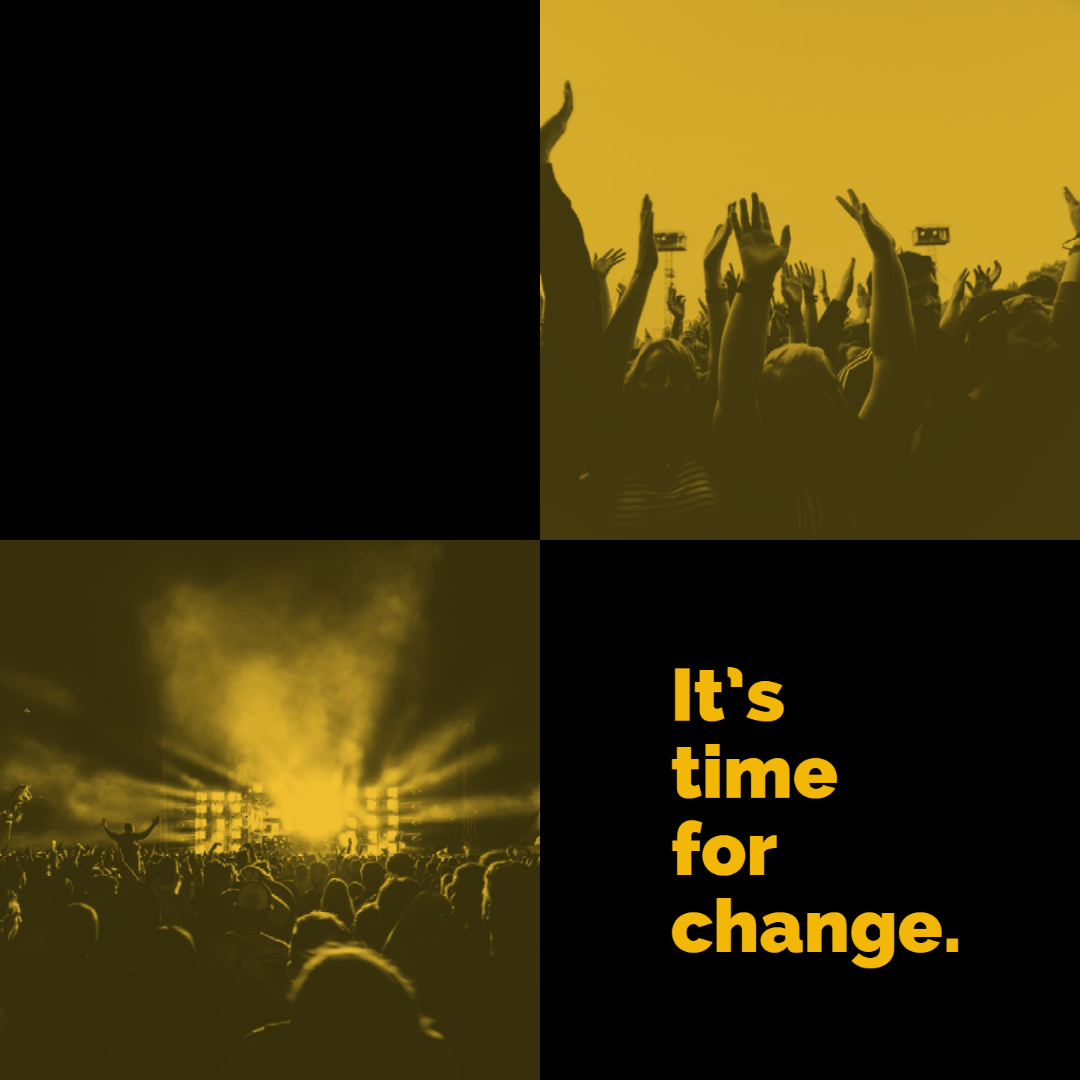
If you are interested in improving fan or attendee experience at your events, I have great news for you. The biggest evolution in device connectivity since the 2000s is going to make critical services like point of sale, rfid scanning, and staff communication exponentially more reliable, faster, and easier to manage.
We are about to transition from a scarcity mindset, where basic applications and services are designed to deal with unstable, unreliable access, to a world of plenty, where the things that matter most "just work". Read on to find out how, and prepare your event for this exciting evolution.
In this article, i will discuss how Private Cellular Networks can significantly enhance the speed, reliability, and management of network-connected devices at events, focusing on three critical services: Cashless Point of Sale, RFID Access Control, Production connectivity for offices and mobile devices.
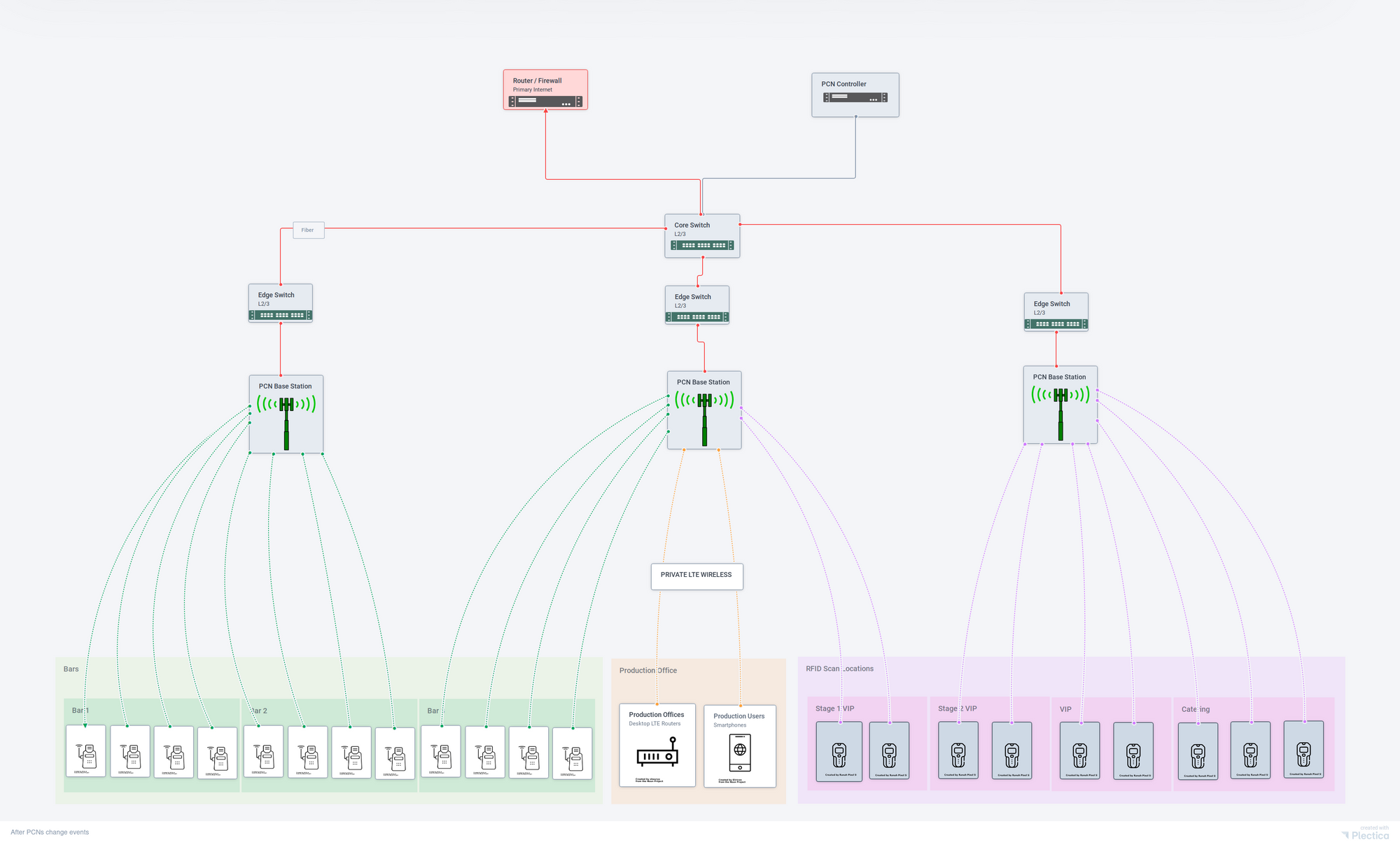
How do I know? I helped deliver the last significant evolution in connectivity during the mid and late 2000s, when we transitioned from cable and ADSL lines to integrated, site-wide wireless and Ethernet networks.
From 2006 until 2019 this was the focus of my professional life. Over the last three years, I've immersed myself in the PCN world, working at one of the leading startups in the field, using this exciting wireless technology every day.
In 2007, when we started the last major evolution in event networks, connecting production trailers, the box office, and CCTV cameras using Wi-Fi technology, we had no idea where the developments we pioneered would lead.
Today, that network foundation enables everything from Point of Sale to RFID wristbands, live streaming, interactive sponsor activations and much more. Fan experience was transformed in just a few years, and we're about to make it better.
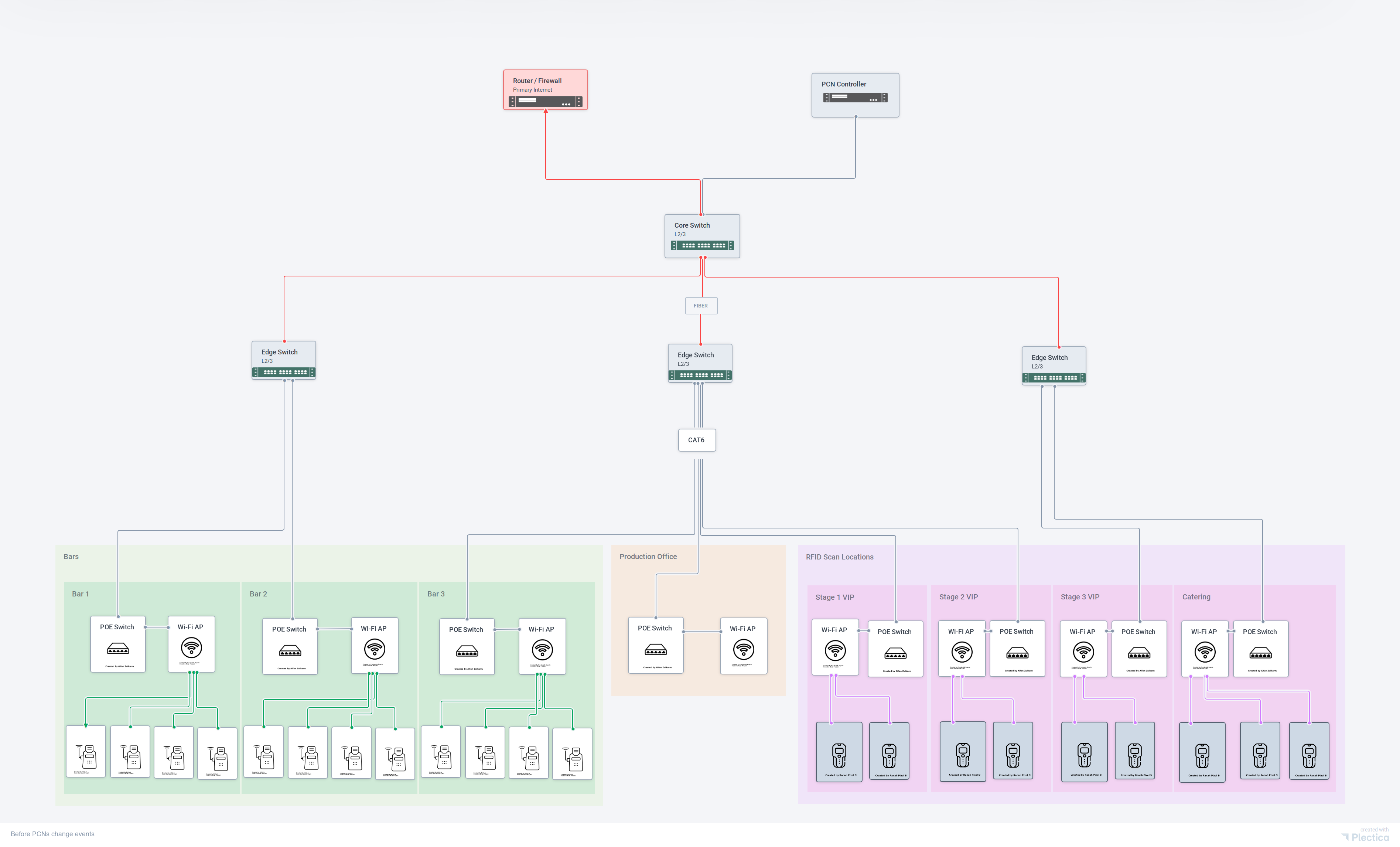
The scale of the networks in use today, and the challenges of building them in the short timescales demanded by live events, requires the efforts of a fantastic group of talented, dedicated, and resourceful people. Many of whom I'm privileged to call my friends.
Well, friends, it's time for a big change.
If you're in event production or promotion, the rest of this post will provide the knowledge required to prepare for the coming changes.
First, perhaps most importantly, don't worry; these changes are good. It's going to make everyone's lives so much easier.
Let's start with the big stuff.
Point of Sale
Ticket sales are just one of the revenue-generating streams for events. Merchandise, food, and beverage sales are critical to profitability and represent the bulk of connected devices at any modern event.
Since 2012 we've been connecting PoS terminals via Wi-Fi or Ethernet, with either microwave links, fiber, or Cat5/6 ethernet providing the 'backhaul' to the show's primary Internet connection.
Getting and keeping these PoS terminals reliably connected is one of the hardest challenges I've ever dealt with, and was one of the primary catalysts for my research into how everything from connection reliability to speed of deployment could be improved.
Problem #1
Wi-Fi technology uses shared, unlicensed, public radio frequencies. Those frequencies are a finite resource. So, congestion and interference become highly problematic when you have many devices in one area, the PoS terminals, the Wi-Fi Access Points, the microwave links, and all the attendees' phones with hotspots enabled.
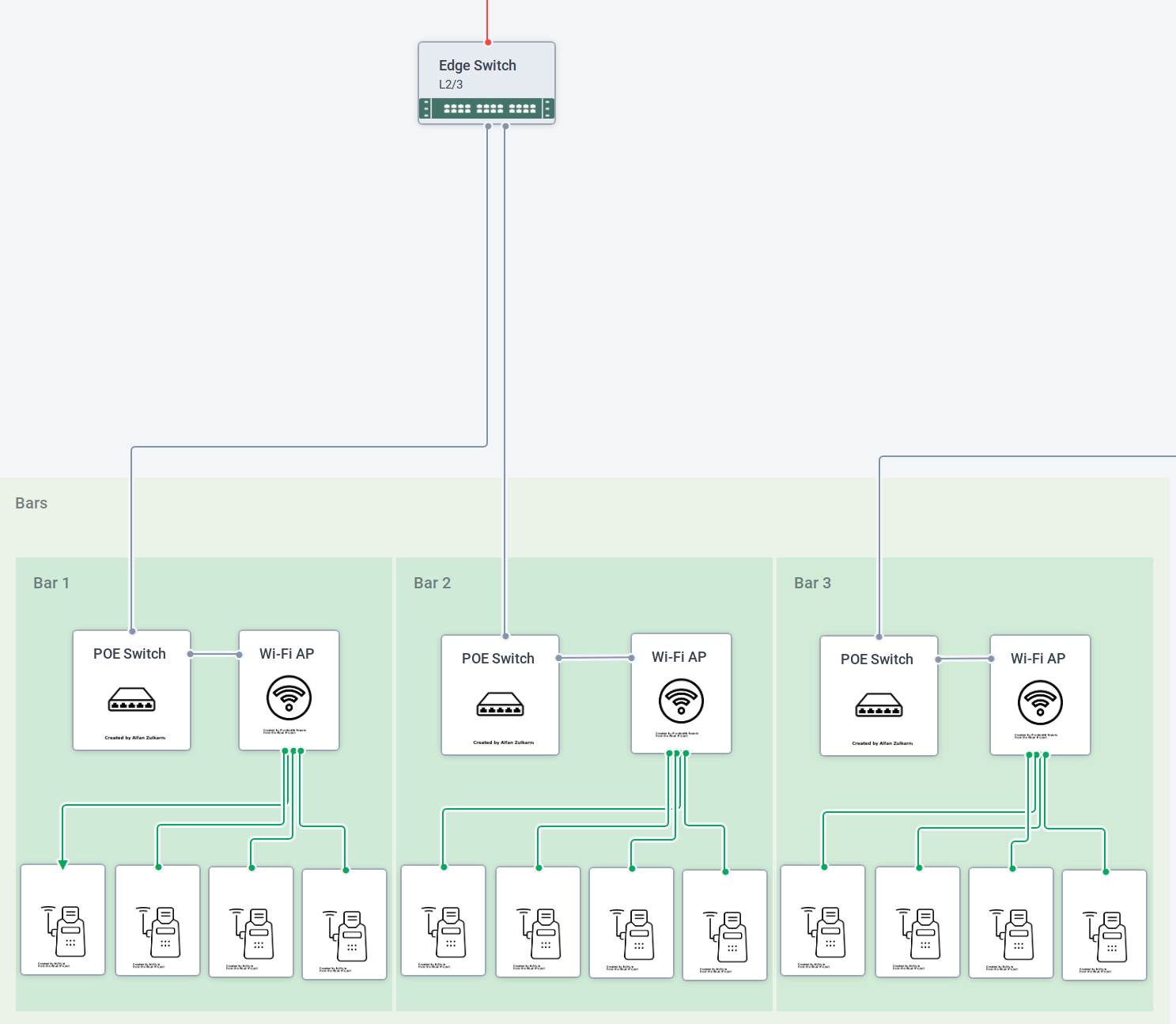
Using cable and fiber backhaul for the Wi-Fi Access Points, rather than microwave links using the same frequencies, helped a little. However, cables can get damaged, so you're swapping one problem for another.
Think of this interference as trying to get a message to a single person across a packed room, where everybody is shouting at each other, trying to do precisely the same thing. In radio engineering, that's called the "noise floor".
This all adds up to slow transaction times and loss of service. Which results in lost revenue, grumpy promoters, long queues, and understandably frustrated attendees. Everybody loses.
Solution
Private cellular networks solve this problem by using licensed, public frequencies. The only people in that room now are your PoS terminals and the cellular base stations they connect to.
Problem #2
Wi-Fi range is limited, measured in tens of feet for fixed PoS tablets and handheld mobile devices. Providing broad coverage at large events requires hundreds of Wi-Fi Access Points.
Apart from aggravating Problem #1, hundreds of Access Points require hundreds of cable runs, all custom installed, all requiring connections to network switches, all of which need backhaul to the primary Internet connection.
The result is a fragile, complex, interdependent system that's frankly a pain in the ass to deal with.
When interference issues arise, a cable gets damaged, or power is lost to vital equipment connecting PoS devices it can take down an entire area. This means fans could miss the winning shot, or their favorite act. That's not the memory we want those folks to leave with.
Solution
Because cellular devices have a far greater range, we can reduce Access Point density and network complexity by up to 90%. Ten private cellular base stations can provide a more reliable, faster PoS network than 200 Wi-Fi Access Points.
Simple. Reliable. Fast.
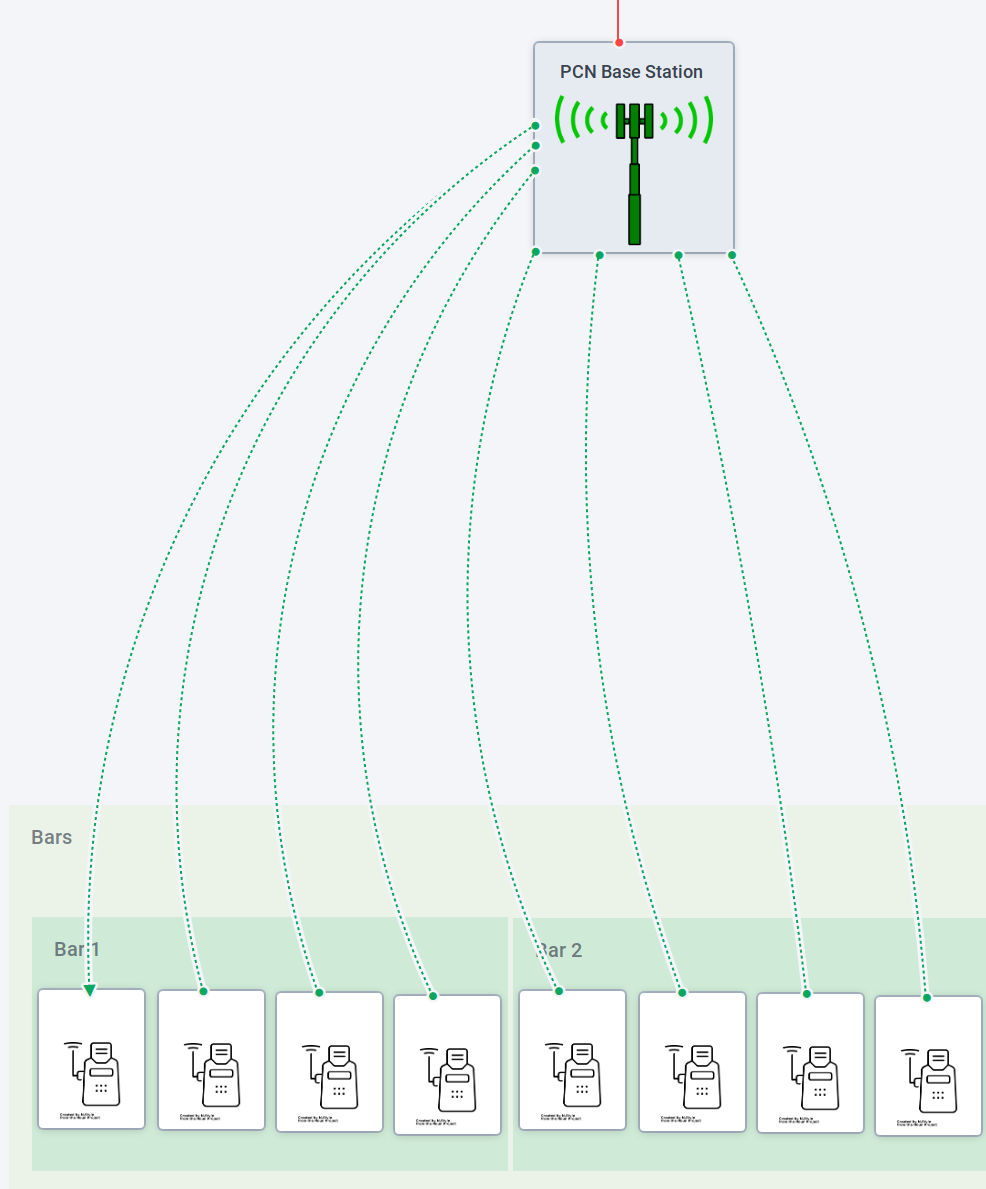
Problem #3
Realistically, this isn't happening tomorrow. Why? Most Point of Sale terminals are Wi-Fi only and don't support private cellular.
Solution
Invest in upgrades, I guarantee it will be worth it.
RFID Access Control
Nobody likes queues. I'm British, we're world-class at queuing, doesn't mean we like it, and your attendees came to the event to have fun, not wait in line right?
Problem #1
Delivering site-wide, reliable connectivity to handheld RFID scanners, see PoS Problem #2. The limited range of these handhelds means scans fail, and the folks doing the scanning must constantly apologize to frustrated attendees queuing longer than anyone would like.

Solution
If you've deployed a PCN for Point of Sale, it's already solved; you can use a handheld RFID scanner anywhere you need across the entire site.
If not, the same rules apply; you can provide that site-wide coverage using cellular base stations with a fraction of what would be needed for Wi-Fi coverage at specific scanning locations.
How many more scan locations could you deploy if coverage was ubiquitous?
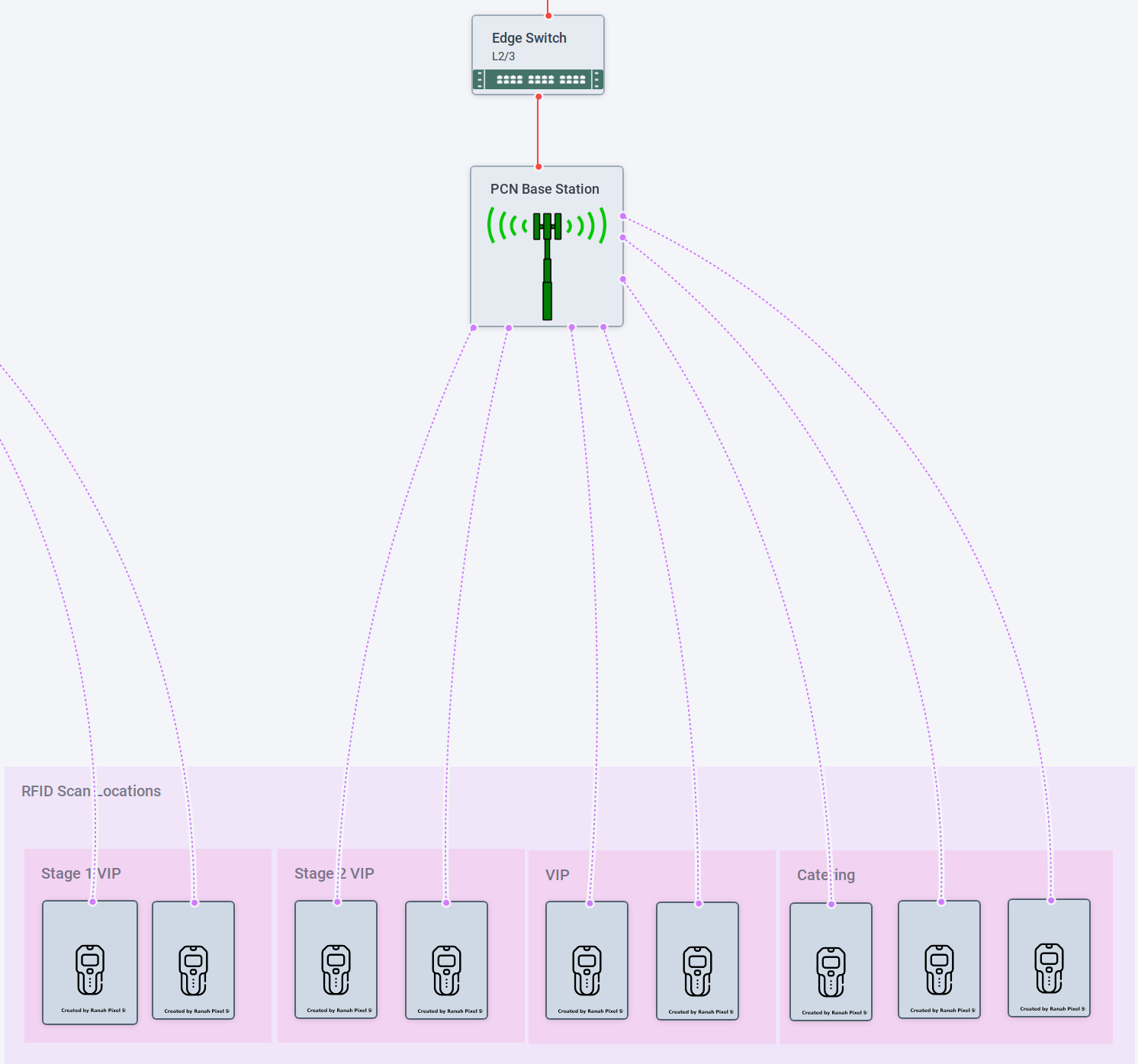
Increased safety and security. Flexible, reliable, and fast.
Many handheld mobile scanners are PCN-compatible smartphones. Anything released since 2021 by major brands like Apple and Samsung will already support the required frequencies.
Production
Providing fast, stable internet for production staff is mission-critical. More capacity, speed, and convenience means more work gets done.
Problem #1
During the early stage of the build, connecting the folks building the show isn't an issue, but as show day approaches, the user count and the number of served locations grow exponentially.
Efficiency means those structures and temporary offices arrive 'just in time', meaning it's a scramble to get them all connected. Every office trailer get's at least one cable, it's own switch, and a Wi-Fi access point. See PoS Problem #2.
More cable runs, more devices to deploy, and an increasingly complex network to manage during the show.
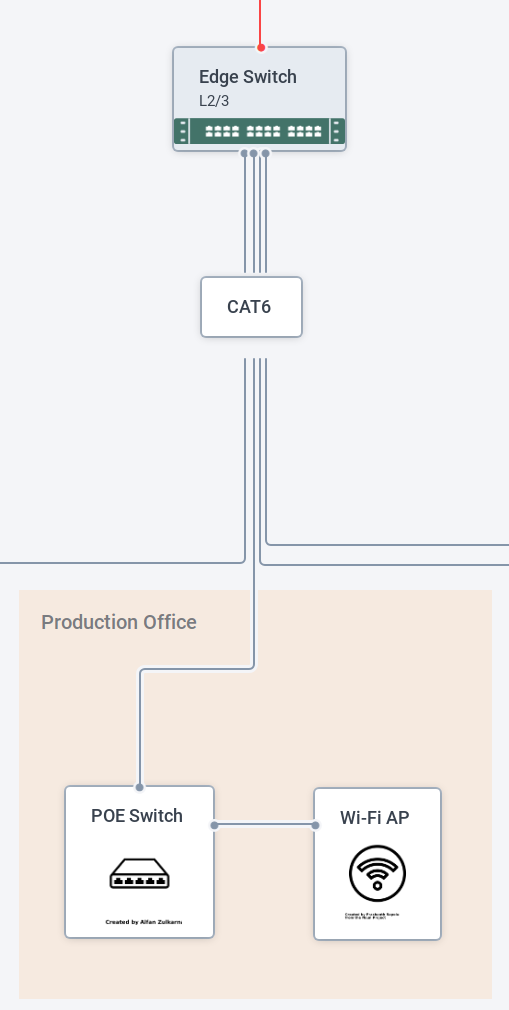
Solution
Desktop Cellular routers or mobile hotspots with built-in Wi-Fi.
Like their 2-way radios, folks can drop by the IT trailer and check out a desktop mobile router or hotspot with builtxin Wi-Fi, returning them before they leave.
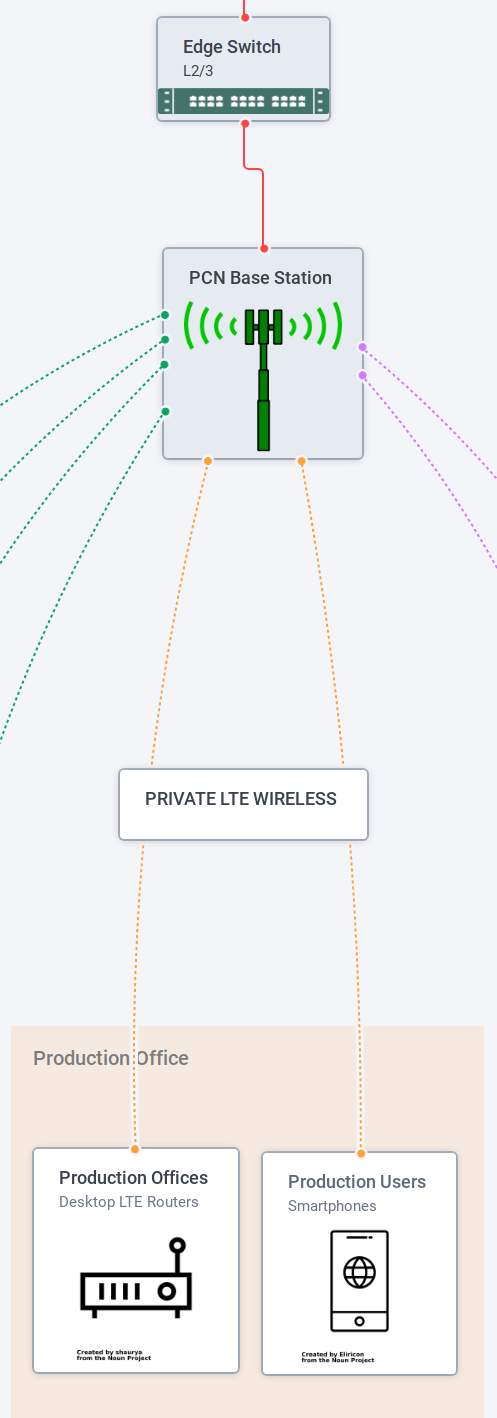
Don't worry, main production offices, media, and video world will continue to be hard-wired and have enterprise Wi-Fi deployed. It's the appropriate solution for the requirement.
In summary, the benefits of using Private Cellular Networks at events are so compelling it's just a matter of time before they are the default choice for critical services.
One more thing...
There's a huge "Wi-Fi Dividend" because we're no longer relying on that technology for critical services like PoS and RFID scanning; it can be used for something else without all the channel planning and congestion issues we experience today.

I hope this post has been informative and helpful. If you have questions about how Private Cellular Networks can benefit your event, book a complimentary 20-minute consultation.
I'll be posting subscriber-exclusive technical deep dives and details on services like 2-way radio for private cellular networks over the coming weeks and months. Access that content and be the first to know about any new posts by clicking the button below.
Thanks for stopping by!
JR

